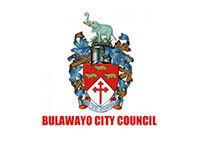
A capital markets executive this week ramped up pressure on Zimbabwe to list its debt on local bourses, as he warned procrastination would end with missed opportunities.
In an exclusive interview with the Zimbabwe Independent, Justin Bgoni, chief executive officer of Zimbabwe Stock Exchange (ZSE) Holdings, said unlocking capital in Zimbabwe hinged on government taking a bold step — listing part of its debt stock.
ZSE Holdings is the parent company of the ZSE and the Victoria Falls Stock Exchange (VFEX).
He argued the move would bring transparency to public borrowing and align Zimbabwe’s markets with regional norms, where government debt listings drive liquidity and depth.
“If you look at all the exchanges in Africa, the biggest portion of their listings is government debt,” Bgoni said. “Look at Botswana, South Africa, Zambia and Malawi — government debt is a significant portion of their market. That is why people sometimes say the market is not big enough.
“What is lacking is government debt. If you look at Zimbabwe, the government has borrowed US$18 billion thereabout. If even half of that was on our market, the exchanges would be much bigger. Definitely, that market is important.”
Zimbabwe’s debt is estimated at US$21 billion.
Across Africa, state borrowing dominates fixed income markets. In South Africa, for example, over 90% of bond listings are government backed instruments — providing investors with long-term, stable assets, while helping authorities manage fiscal obligations transparently. Zambia has also tapped its domestic capital market for infrastructure financing, while Botswana’s Pula Bonds have attracted institutional investors from across the region.
- Mavhunga puts DeMbare into Chibuku quarterfinals
- Bulls to charge into Zimbabwe gold stocks
- Ndiraya concerned as goals dry up
- Letters: How solar power is transforming African farms
Keep Reading
Zimbabwe, however, remains an outlier. Its government debt remains largely off market and inaccessible to the private sector — despite promises last year to collaborate with the ZSE to bring instruments to market.
This week, Bgoni said valuable listing opportunities were idle, warning capital starved Zimbabwe was missing a chance to convert debt into a productive economic asset.
Yet, even as he made the case for reform, Bgoni acknowledged the hurdles.
“For the debt market to work, you need a currency that is stable, and you need interest rates that make sense,” he said.
“But if you look at ZiG at the moment, its interest rates are 35% plus. When interest rates are high, it is difficult to have a debt market,” Bgoni added.
He added that ongoing engagement with the Reserve Bank of Zimbabwe had raised hopes for policy easing.
“The expectation, seeing what is happening in terms of inflation, and talking to the Reserve Bank as well, is they expect in the short-to-medium term for interest rates to come down on the ZiG side to meet returns. I think the lower it gets, the more you see some debt products on our exchange.”
A functioning domestic debt market would offer more than capital, analysts said this week, noting it would signal confidence in the local economy and help rebuild investor trust in public institutions. It would also align Zimbabwe with regional benchmarks, where bond markets are used to finance infrastructure, manage liquidity, and reduce reliance on external borrowing.






